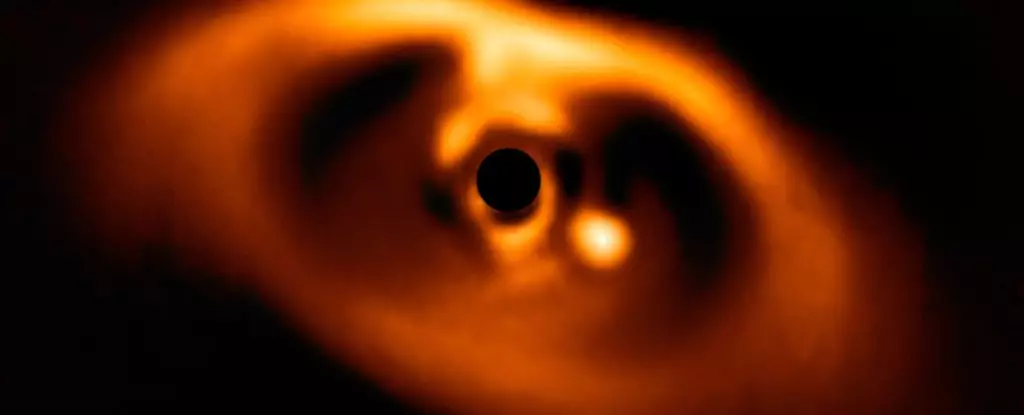The field of astronomy is currently experiencing a significant transformation, characterized by groundbreaking discoveries and a reevaluation of long-standing theories. With advancements in technology—particularly next-generation telescopes and machine learning—researchers are delving deeper into the complexities of planetary systems. The exploration of how planets develop around stars, long explained by the Nebular Hypothesis, is undergoing scrutiny as new observations challenge our previous understandings. This shift represents a critical moment in the evolution of cosmic discovery, as scientists confront the intricacies of how and why planets form in the universe.
The Nebular Hypothesis has served as a foundational theory in astronomy, positing that star systems emerge from large clouds of gas and dust, known as nebulae. According to this framework, when these clouds undergo gravitational collapse, they consolidate to form a new star, with residual materials translating into a protoplanetary disk. The prevailing assumption has been that the composition of resultant planets directly mirrors that of the surrounding disk material. This perspective shaped the understanding of exoplanet characteristics and their formation processes.
Contrary to expectations derived from the Nebular Hypothesis, a recent study has demonstrated discrepancies in the atmospheric composition of a developing exoplanet, PDS 70b, compared to the protoplanetary disk from which it formed. Led by Postdoctoral Associate Chih-Chun “Dino” Hsu at Northwestern University, the research team uncovered significant variations in the carbon-to-oxygen ratio when analyzing the planet’s atmosphere. Their findings suggest a level of complexity far beyond the simplistic models previously adhered to by astronomers.
The team utilized advanced technology—specifically the Keck Planet Imager and Characterizer (KPIC)—to study PDS 70b, which orbits a youthful variable star approximately 366 light-years away. Not only is this exoplanet unique due to its formation environment, but it also serves as a crucial case study for scientists scrutinizing the nuances of planetary evolution.
The ability to directly observe and analyze protoplanetary systems like PDS 70b has only recently become feasible, thanks to technological innovations. With co-developed photonics technologies, the researchers overcame previous observational challenges where the brightness of the host star obscured the faint light emanating from the planet itself. This leap forward marks a significant achievement in observational astrophysics, enabling scientists to examine both the atmospheric components of PDS 70b and the chemical composition of its natal disk—a feat rarely accomplished in the study of distant exoplanets.
The implementation of KPIC allowed the team to gather detailed spectroscopic data, revealing the presence of essential elements like carbon monoxide and water vapor within the planet’s atmosphere. By comparing these findings with previously established data from the protoplanetary disk, the researchers made an unexpected discovery: the carbon-to-oxygen ratio in PDS 70b was considerably lower than anticipated. This anomaly necessitated a reassessment of the traditional narrative surrounding planet formation.
Given the new evidence, Hsu and his colleagues proposed alternative hypotheses to explain the unexpected results. One theory suggests that PDS 70b may have formed before the surrounding disk had become enriched with carbon. Another possibility posits that the planet accreted substantial amounts of solid materials in addition to gaseous components, highlighting the importance of solid-state materials in determining atmospheric compositions. This nuanced understanding indicates that the methodologies employed to analyze exoplanets may require recalibration.
The implications of these findings resonate broadly within the astronomical community and prompt a reevaluation of the long-accepted models of planetary formation. It suggests that planetary development could be influenced by a wider range of processes than previously thought, incorporating solid accretion alongside gaseous components.
Looking Ahead: Future Research and Considerations
As the research team plans to extend their studies to include PDS 70c, another exoplanet in the same system, they hope to further illuminate the processes governing planetary evolution. The comparison between these two young planets may yield profound insights into their formation histories, ultimately enriching the broader understanding of planetary systems in various stages of development.
This historic investigation into PDS 70b not only conveys the exciting nuances of planetary formation but also signifies a pivotal moment in the rewriting of astronomical narratives. With each new discovery, the complexities of the cosmos challenge existing paradigms, inspiring a spirit of inquiry that continues to propel the field into uncharted territories. As the age of shifting paradigms unfolds, an exciting future lies ahead for both astronomers and enthusiasts alike, eager to unravel the enigmas of the universe.

